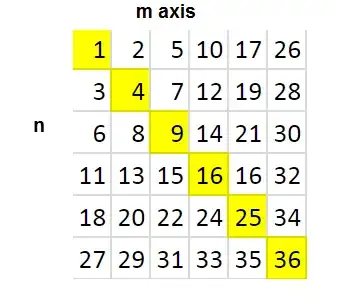I'm looking for a 'simple' bijection $$ \pi \colon \mathbb N_0 \times \mathbb N_0 \to \mathbb N_0, $$
where 'simple' in this context means that it should be as easy as possible to define and it should be self-evident that said function is in fact a bijection. It's a quest for convenience - not minimal complexity in any rigorous sense.
Here are a couple of examples I came up with - none of which satisfy both requirements:
- Let $\pi(m,n) = c(2^m3^{n+1})$, where $c \colon \{2^m3^{n+1} \mid m,n \in \mathbb N_0 \}\to \mathbb N_0$ is the order isomorphism (or in fact Mostowski collapse) of its domain under the natural ordering,
- Let $\pi(m,n) = \langle n,m \rangle$ - Gödel's pairing function,
- Let $\pi(m,n) = m \oplus n$ - the number resulting from 'riffling' $m,n$ (where we imagine both $m$ and $n$ as in infinite decks of cards whose $i$th element is labeled with its respective $i$th digit).
- ...

